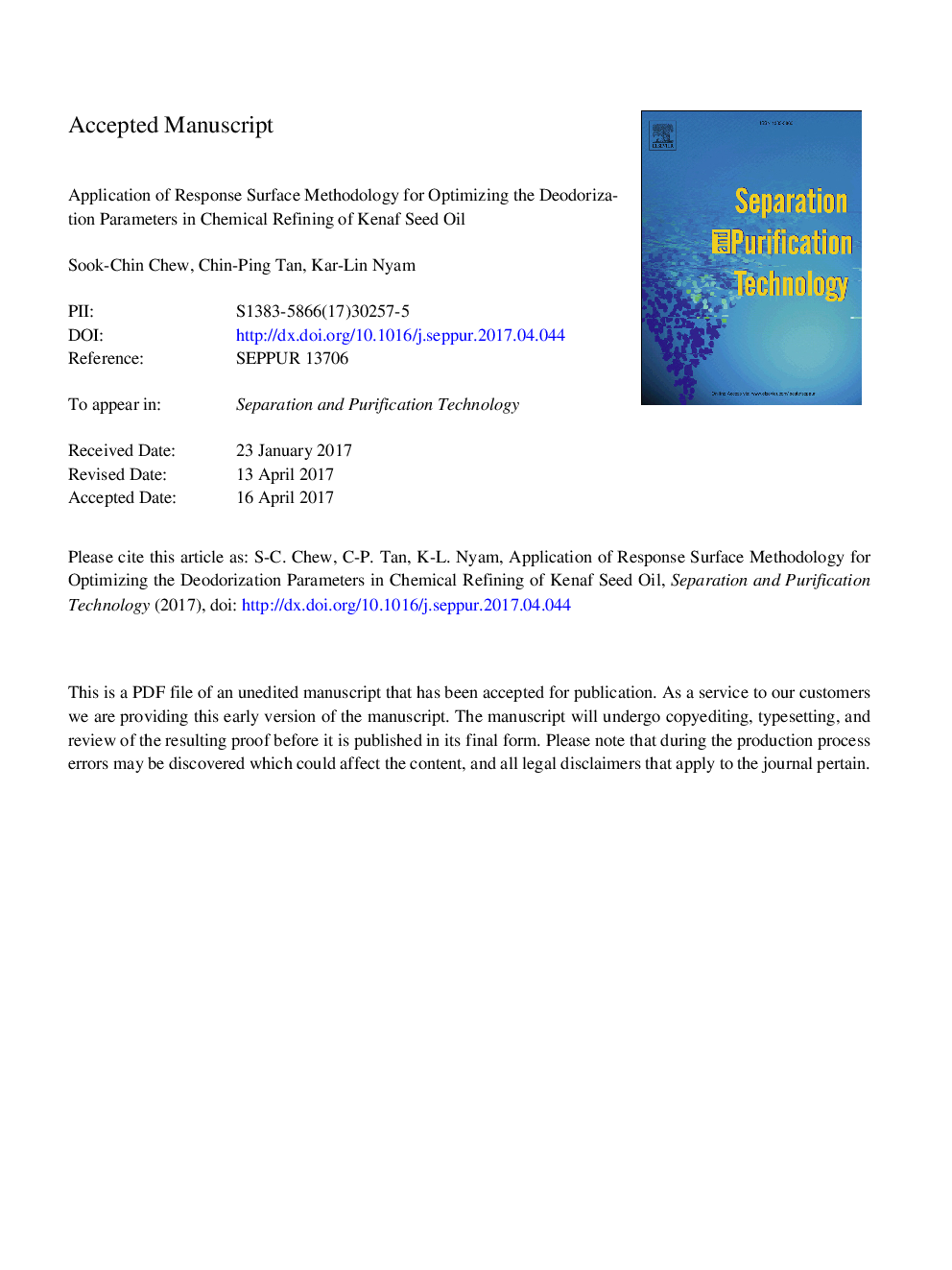| Article ID | Journal | Published Year | Pages | File Type |
|---|---|---|---|---|
| 4989743 | Separation and Purification Technology | 2017 | 34 Pages |
Abstract
Kenaf seed oil has been suggested to be used as edible oil but there is limited information available about the optimal parameters to produce refined kenaf seed oil. Response surface methodology was used to study the effects of the temperature (180-260 °C) and time (0.5-2.5 h) in the deodorization stage of the refining process for kenaf seed oil. Free fatty acids, p-Anisidine value, total color difference, and tocopherol and tocotrienol contents were measured. Well-fitting models were successfully generated for the responses of free fatty acids (R2 = 0.9619, p < 0.0001), p-Anisidine value (R2 = 0.9867, p = 0.0014), total color difference (R2 = 0.9997, p < 0.0001), and tocopherol and tocotrienol contents (R2 = 0.9758, p < 0.0001). The optimum parameters were recommended at a temperature of 220 °C and a time of 1.5 h. These optimum parameters produced refined kenaf seed oil with free fatty acids of 0.036%, peroxide value of 0 meq/kg, p-Anisidine value of 6.67, color of Lâ = 7.58, aâ = â2.48, bâ = 3.29, and tocopherols and tocotrienols contents of 39.69 mg/100 g. There were no significant differences (p > 0.05) between experimental and predicted values, indicating the adequacy of the well-fitting models.
Related Topics
Physical Sciences and Engineering
Chemical Engineering
Filtration and Separation
Authors
Sook-Chin Chew, Chin-Ping Tan, Kar-Lin Nyam,
